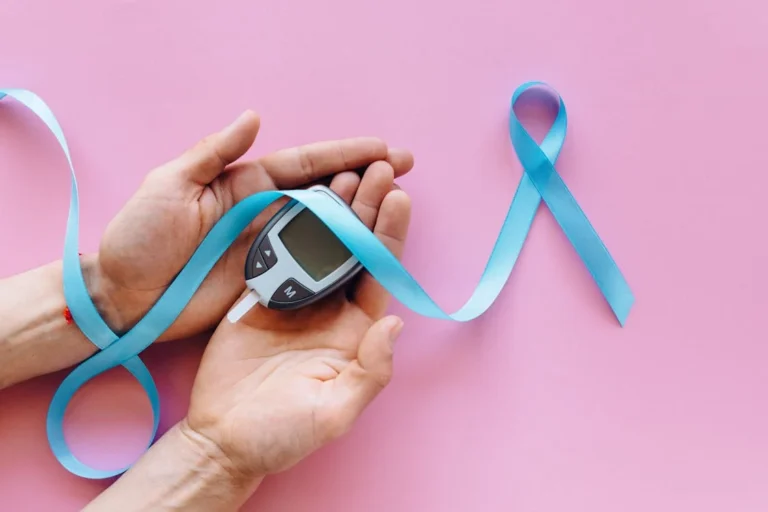By maintaining an appropriate diet, people with diabetes can help control their condition. Choosing good lunch selections may entail avoiding items heavy in fat, salt, and sugar.
Diabetes is a group of conditions that can make it difficult for people to manage their blood sugar levels. The two most common types are type 1 diabetes and type 2 diabetes. Type 1 typically occurs when the body does not produce enough of the hormone insulin, while type 2 often occurs when the body does not respond properly to insulin.
To help manage their blood sugar levels, a person living with diabetes may consider lifestyle changes, such as changing their dietary habits. This may involve making healthier food choices and limiting foods that can negatively affect blood sugar levels.
Typically, suitable lunch options will involve foods high in fiber and protein and lower in added sugars, fats, and salts.
Lunch ideas

People who need to manage their blood sugar can still choose from a wide variety of foods when they are looking for a tasty lunch. A person can consider many options while monitoring their carbohydrate intake. Possible options include:
- eating a bowl of soup and a salad — for example, tomato soup with a kale and apple salad
- making a high fiber whole wheat wrap, such as turkey with hummus, cucumber, tomatoes, feta cheese, and olives
- choosing a burrito bowl but skipping the rice while keeping the beans and adding fajita vegetables, chicken or tofu, lettuce, pico de gallo, avocado, and salsa
- making a spinach salad with canned tuna, mayonnaise, Greek yogurt, celery, and lemon juice, served over greens and diced apple
- combining a hard-boiled egg with a serving of flourless seed crackers, string cheese, a piece of fruit, and vegetable sticks with peanut butter
- making a smoothie from tofu or plain Greek yogurt, spinach, frozen raw cauliflower, unsweetened flax milk, juice from half a lemon, and 1 cup of frozen mixed berries
- making an open-faced sandwich with one slice of whole grain sprouted bread, grilled vegetables, hummus, and smashed avocado with lettuce as the topper to make it easier to eat
- dipping carrots, celery sticks, cauliflower florets, and cherry tomatoes in hummus and combining this with half a can of sardines and a piece of fruit

HEALTHLINE NEWSLETTER
Get our Diabetes newsletter
Twice a week you’ll get tips on eating wisely, news on breakthroughs, and more resources to help you stay on top of your diabetes.
Enter your emailJOIN NOW
Your privacy is important to us
Classic ingredients
With mindful eating and enough planning, people with diabetes can safely enjoy a satisfying and varied diet. Many foods are rich in vitamins, minerals, antioxidants, and fiber. In addition to being good for general health, these foods can be beneficial for managing diabetes.
With portion size in mind, a person with diabetes can include the following foods as part of their lunch:
- canned tuna, salmon, or sardines
- low salt deli meats such as turkey and chicken
- hard-boiled eggs
- salads with a side of dressing
- low salt soups and chili
- whole fruit such as apples and berries
- cottage cheese
- plain, unsweetened Greek yogurt
- peanut or almond butter
- nuts and seeds
- avocado
- raw vegetables such as cherry tomatoes, celery sticks, carrots, cauliflower, broccoli, and snap peas
Recipes
A person living with diabetes can consider a variety of healthful and tasty recipes. Examples of diabetes-friendly lunches include:
- three-cheese vegetable sandwich
- beans and greens soup
- chicken breast, fajita vegetables, pumpkin seeds, and beans in lettuce cups with salsa
- grilled vegetable sandwich on high fiber bread
- tomato, mozzarella, and chickpea salad
- Mediterranean turkey wrap
- pinto bean, brown rice, and spinach salad
- grilled portobello mushroom and vegetable stir-fry with quinoa
- grilled salmon and spinach salad with roasted sweet potatoes on top
Sandwich strategies
Sandwiches are one of the most commonTrusted Source foods people in the United States eat for lunch. This very popular meal choice can also be part of a nutritious lunch for people with diabetes.
People with diabetes who want to include sandwiches in their meal plan can consider the following steps:
- increasing fiber content by using whole wheat, whole grain, or sprouted-grain bread for better nutrition, slower carbohydrate absorption, and a lower postmeal blood sugar level
- making an open-faced sandwich, using thin sandwich bread to lower carbohydrate counts, or making a wrap with low carb tortillas or lettuce
- selecting lean, low salt deli meats such as roast turkey
- using low fat mayonnaise or other condiments such as mustard, pesto, hummus, yogurt, or avocado
- replacing cheese with vegetables or fruits, such as tomatoes or peppers, pesto, or avocado
Quick afternoon snack options for diabetes
Finding time to prepare and eat lunch can often be difficult during the workweek. It can be helpful for people to consider quick, healthful choices for a diabetes-friendly snack when they may not have time to prepare lunch. Examples include:
- hard-boiled eggs with fruit
- yogurt with berries, chia seeds, and almonds
- low salt bean soup cups
- cottage cheese with fruit or diced tomatoes
Eating out
Restaurant meals tend to involve large portions that are high in calories, fat, carbohydrates, sugar, and salt but low in fiber and vegetables. This can make eating out a challenge for people who have diabetes. They have to be extremely careful to choose a healthful lunch that will not cause a blood sugar spike.
Managing portion sizes is especially important when eating out, as lunch dishes may be much larger than appropriate. When eating out for lunch, people may consider.
- swapping items such as chips, fries, and sugary drinks for healthier options such as fruit, veggies, and bottled water
- choosing smaller portion sizes or eating a small amount of the meal and taking the rest home to eat later
- opting for filling and healthy options such as premade salads with lean proteins
- choosing a sandwich made with whole grain bread and lean protein along with a salad and a low fat mayonnaise or yogurt dressing
- picking options with less fat and fewer calories, such as baked, steamed, grilled, or broiled foods
- limiting or avoiding fried, breaded, or creamy foods
- ordering sauces, salad dressing, or spreads on the side and using just enough for flavor
Good Ways
Keeping blood sugar levels within the recommended range is vital for anyone with diabetes. A person might consider working with a doctor or a registered dietitian to develop a healthy eating plan. This will involve learning about making healthy food choices, portion planning, and creating suitable meals.
People can use Trusted Source the following tools to help with this:
The Plate Method
The Plate Method is a tool that helps people select appropriate proportions of different foods to help manage their blood sugar levels. People can use this method for all meals, including lunch.
The Plate Method involves using a reasonably sized plate, about 9 inches across, and separating it into three sections:
- Non-starchy vegetables: Half the plate should contain non-starchy vegetables. These vegetables are nutritious but lower in carbohydrates, so they should not raise blood sugar levels much. Examples include broccoli, Brussels sprouts, cabbage, carrots, and peppers.
- Lean proteins: One-quarter of the plate should contain lean proteins, which are protein sources that are lower in saturated fats. Examples include chicken, turkey, eggs, salmon, cod, shrimp, tofu, tempeh, and nuts.
- Carbohydrates: The final quarter should contain foods higher in carbohydrates. Because these foods have the greatest impact on blood sugar, a person should choose whole food carb sources, which are rich in fiber and natural sugars but have no added sugars. Examples include whole grains, starchy vegetables, beans, fruits, and dairy products.
A person can also drink water or a low calorie drink such as unsweetened tea or coffee.
Carbohydrate counting
Carb counting involves counting the grams of carbohydrate in a meal and matching that to the dose of insulin a person administers.
Typically, for diabetes meal planning, 1 serving of carbs equals roughly 15 grams of carbohydrates. People can often find the number of grams of carbs on a food’s nutrition label. In other cases, a person can use an app to find out the grams of carbs in foods and drinks.
By eating similar amounts of carbs at each meal and administering a suitable amount of insulin if necessary, a person can keep their blood sugar levels steady.

Frequently asked questions
Here are some frequently asked questions about lunch and living with diabetes.
What foods can a diabetic eat for lunch?
A person with diabetes can eat most foods for lunch, within appropriate portion sizes. It is advisable to eat a well-balanced meal containingTrusted Source lean proteins, whole grains, dairy, fruits, and non-starchy vegetables.
A person may also consider some healthier swaps, such as drinking diet soda instead of soda with added sugar, eating baked chips instead of fried ones, and eating lean proteins rather than ones with more saturated fat.
What kind of sandwich can a diabetic eat?
A person with diabetes can eat any type of sandwich. However, it is advisable to opt for a healthier bread option. For example, a person can replace white bread with whole grain bread, a low carb tortilla, or a pita.
What foods can diabetics eat freely?
People with diabetes can eat a wide range of foods. Non-starchy vegetables, such as broccoli, cauliflower, and cucumber, are one food group they can often eat in larger amounts. These vegetables can help manage blood sugar levels.
What is the best lunch meat for diabetics?
Typically, it is advisable to choose protein options that are lower in salt and fat. This can include lean meats and meat alternatives. For example, suitable lean meat options can include chicken and turkey breast without the skin.
Learn more about meat options for a diabetes meal plan.
Summary
When living with diabetes, a person may consider making some lifestyle changes that can help them better manage the disease. Often, this will involve making healthier dietary choices such as limiting foods that are high in fat, salt, and added sugar and choosing more nutritious foods.
For lunch options, a person may want to consider suitable portions of lean proteins, whole grains, dairy, fruits, and non-starchy vegetables. They can also swap certain food items for healthier alternatives, such as eating whole grain bread instead of white and drinking diet soda instead of soda with added sugar.





